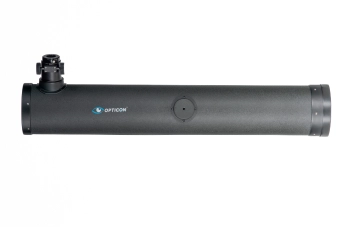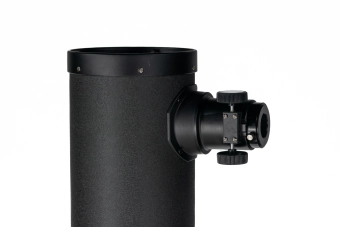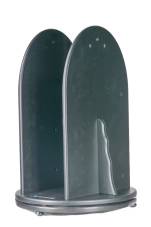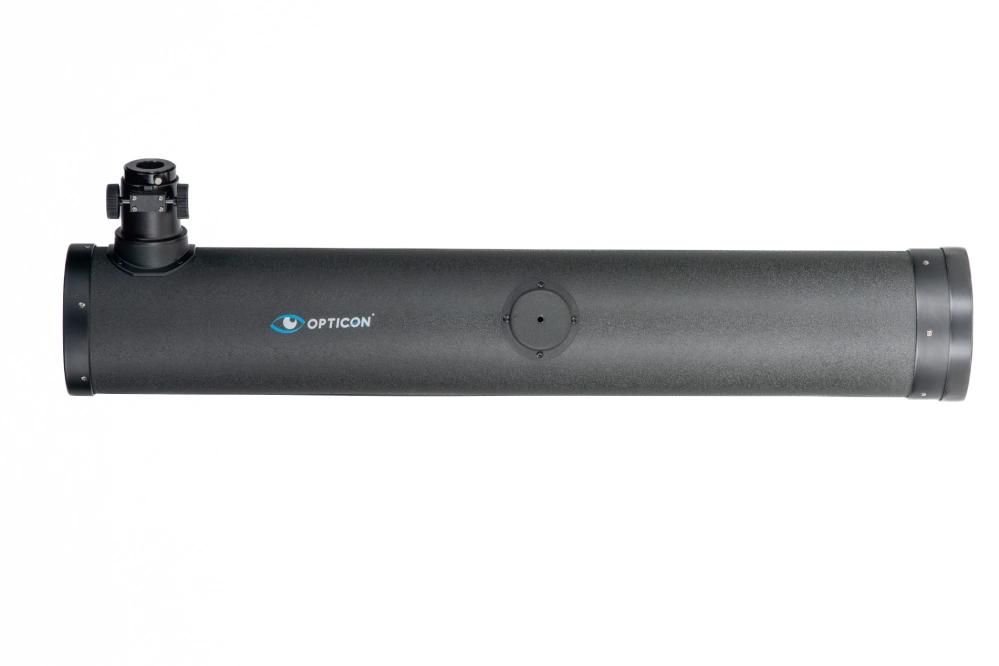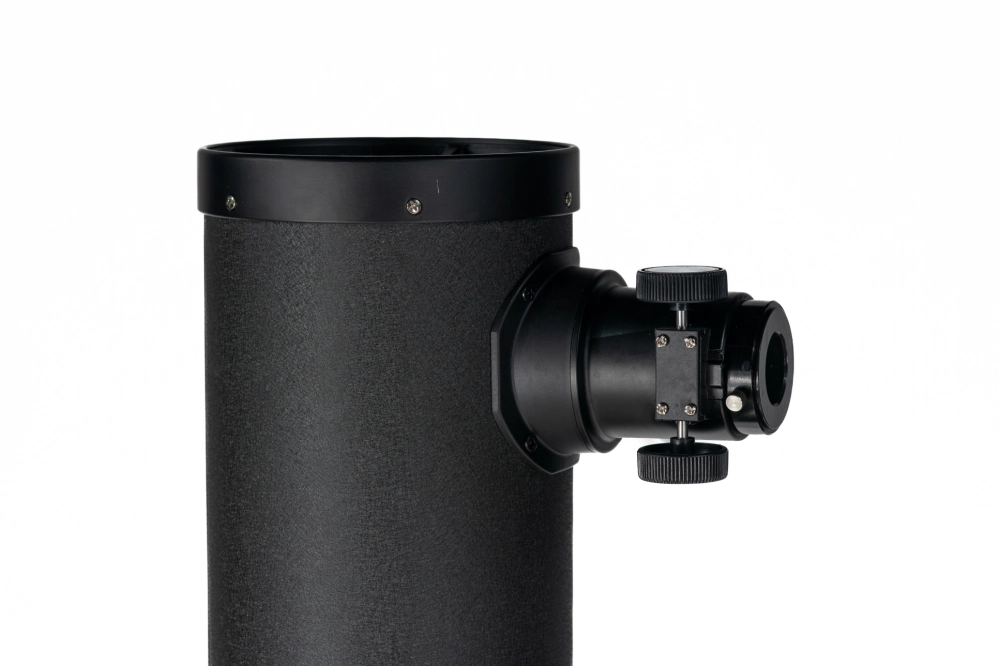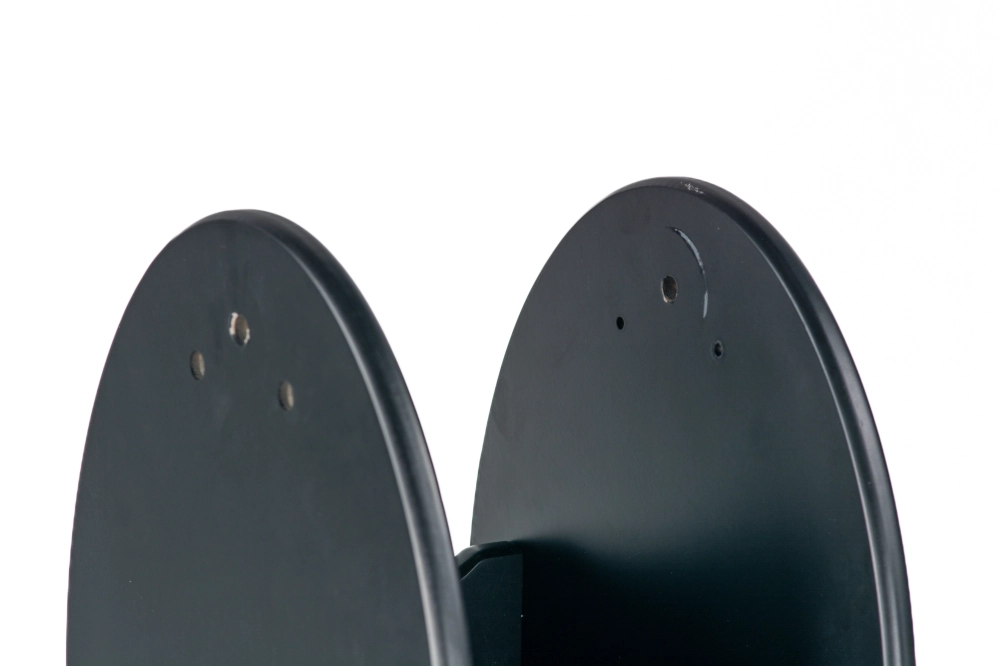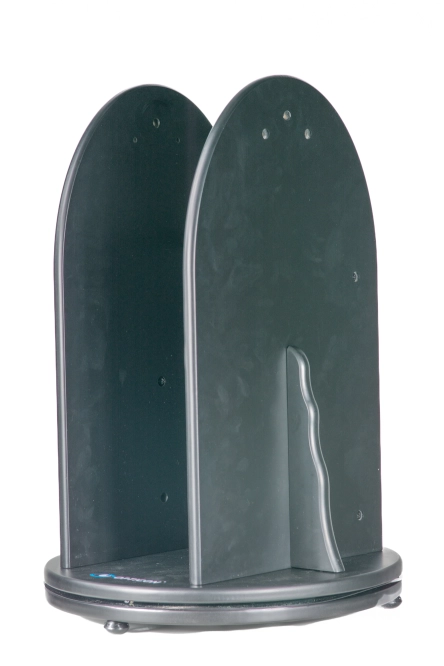- Type: Reflector (mirror telescope)
- Zoom: 110 x
- Diameter [mm]: 135 mm
- Focal length [mm]: 1100 mm
- Light Output: f / 8.1
- Resolving power: 0.86"
- Stellar range (magnitude): 12,8 mag
- Focuser: 2"/1.25"
- Assembly: Dobson
- Image: Inverted
- Brand: Opticon
The product does not constitute ballistic protection and has no other protective properties. It is not intended for use in protective purposes, including during tactical/war/ASG games.
The use of the product for ballistic protection and/or for other protective purposes, including the use during tactical/war/ASG games, is the use of the product contrary to its intended use, in which case the buyer does so solely at his own risk.
The vendor is not liable for damage to the product, that might result from the use of the product contrary to its intended purpose, this also applies to all possible health consequences (bodily harm) for the user (buyer) or damage to property. Moreover, a misuse of the product will void the warranty on the product.
The vendor is liable to the buyer under the warranty for product defects (in the event of such defects) only if the buyer/user uses the product for its intended purpose, i.e. for purposes other than protective purposes, including the use during tactical/war/ASG games.
The lack of any protective properties of the product is a feature, not a product defect, and therefore it does not constitute a physical defect of the product within the meaning of the Polish Civil Code.
OPTICON Stargaze Telescope (OUTLET)
Stargaze is a reflector telescope, made for observing fascinating objects in our solar system, such as planets or the moon. It can be used at home thanks to it’ssmall dimensions, it will easily fit on the balcony or windowsill. If you are looking for equipment for more advanced space observations, then it is worth choosing an Opticon telescope.Opticon
Reflector telescope for demanding users
The Opticon Stargaze telescope is an optical equipment for those space enthusiasts who already have some experience in star observations. It is a little more difficult to operate than a refractor telescopes. A reflector telescope requires the appropriate settings so that you can look at a given object, which is why it is usually recommended to users who are more experienced with telescopes. Such users have more knowledge about searching for objects in the sky and how to properly set up their equipment to get the best results.
The Opticon Stargaze Telescope - characteristics
The optical system of the telescope is made up of an eyepiece and a mirror. The mirror diameter is 135 mm - so it is optimal for this type of telescope. It allows the observation of all the most interesting objects, while maintaining a relatively small size of the telescope. The equipment takes up little space because it is placed on a tried and tested, well-known Dobson mount. This setup has other advantages - it is stable and durable, and very easy to use. Thanks to it, you can watch space even from the window or balcony of your own home. This is a great solution for those of you who don't have the room for a full-sized telescope at their home.
The most important telescope parameters
The focal length of the telescope is 1100 mm, and the magnification is 110 x - the Opticon Stargaze will bring the object closer to you so that you can easily observe at the details of the planets and the surface of the Moon. It can also be expanded with additional accessories and use elements from larger and more expensive telescopes - the Stargaze is compatible with professional accessories in the 1.25" standard. Thanks to this, it is possible to modify the parameters of the telescope increasing its observation capabilities
Observe fascinating objects of the Solar System
With the Opticon Stargaze telescope, it’s possible to observe all the most interesting objects in our Solar System. You will be able to observe craters, seas and mountains on the moon, or the surface of Venus or Mars. Marvel at the moons of Jupiter and the rings of Saturn. And all this in the privacy of your own home. Stargaze will be its decoration and main attraction, thanks to which you will spend quality free time with your family and entertain friends during social meetings.
The Stargaze telescope and its accessories
Opticon Stargaze is ready for use right away. You don't have to buy additional elements, because the set with the telescope also includes very useful accessories. The Barlow lens enables you to increase the magnification even three times. If you apply it, the maximum theoretical magnification will be as much as 330 x. You also get not one eyepiece, but two interchangeable eyepieces - 25 mm KF and 10 mm PF. You will also get a map of the solar system, thanks to which you can easily locate a given object. The Opticon telescope is covered by a two-year warranty, and, like other Opticon devices, it has been tested and designed by professionals.
Together with the telescope, you will receive everything necessary to enter the fascinating world of astronomy: sky maps, computer programs, practical guides, a downloadable HD documentary film and a wonderful, richly illustrated book "Szlakiem gwiazd", written by experts for space lovers. Only now you'll also get an exclusive 3D gallery and 3D glasses.
Attached glasses
Eyepieces included. They affect the magnification obtained with the telescope. To get the magnification available with a given configuration, divide the focal length value by the diameter of the eyepiece. So, for a telescope with a focal length of 900 mm and an eyepiece diameter of 20 mm, you will get a base magnification value of 45 x, while using a 6 mm eyepiece in the same telescope - 150 x.
Barlow’s lens
A scattering lens placed in the focuser of a telescope before the actual eyepiece. It gives the effect of extending the focal length of the lens, which for visual observation gives the effect equivalent to using an eyepiece with a shorter focal length. Simply put - higher magnification.
Telescopes can be supplied with an eyepiece focuser in two standards - 0.98" and 1.25". This information is important to determine the compatibility of the equipment with additional eyepieces, photographic adapters, etc.
The ratio of the focal length of an optical instrument to its diameter. It is a constant that determines the amount of light reaching the focal point of the main lens or mirror. In practice, the smaller the value of f, the better and more accurate the image we get.
Focal length [mm]
The distance between the focus of an optical system and the focal point of the optical system. It affects the magnification given by the optical system and the lens speed.
Image reversible
A lens that allows you to invert the image 180 degrees, so that you can use the telescope for ground observations. It also provides additional magnification.
Diameter [mm]
The diameter of the mirror or lens (aperture) - determines the resolving power of the equipment and the observational field of view. Larger instruments usually give greater observational capabilities, better image quality and more detail.
Maps to help conduct observations of the night sky.
Moon and its craters, Mars, Venus, Jupiter with its moons, constellationsDue to its characteristics, this telescope is best suited for detailed observations of the Moon's surface, observations of the closer planets and Jupiter with its moons, as well as any low-contrast space objects with a visual background.
